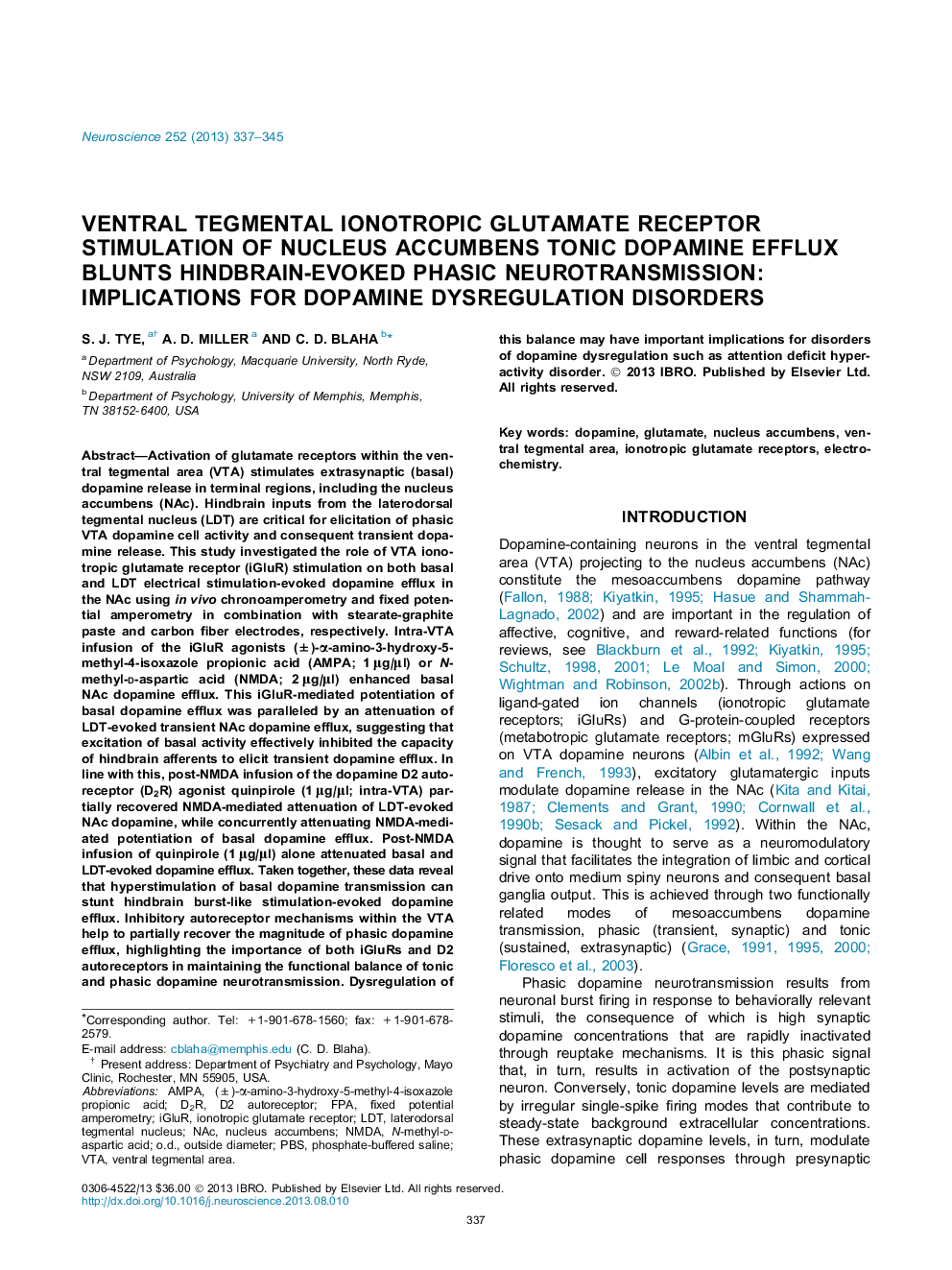| Article ID | Journal | Published Year | Pages | File Type |
|---|---|---|---|---|
| 4337823 | Neuroscience | 2013 | 9 Pages |
•Midbrain iGluR activation potentiates basal nucleus accumbens dopamine efflux.•Midbrain iGluR activation attenuates hindbrain-evoked transient accumbens dopamine efflux.•Midbrain D2R activation attenuates iGluR potentiation of basal dopamine efflux.•Midbrain D2R activation recovers iGluR attenuation of transient dopamine efflux.
Activation of glutamate receptors within the ventral tegmental area (VTA) stimulates extrasynaptic (basal) dopamine release in terminal regions, including the nucleus accumbens (NAc). Hindbrain inputs from the laterodorsal tegmental nucleus (LDT) are critical for elicitation of phasic VTA dopamine cell activity and consequent transient dopamine release. This study investigated the role of VTA ionotropic glutamate receptor (iGluR) stimulation on both basal and LDT electrical stimulation-evoked dopamine efflux in the NAc using in vivo chronoamperometry and fixed potential amperometry in combination with stearate-graphite paste and carbon fiber electrodes, respectively. Intra-VTA infusion of the iGluR agonists (±)-α-amino-3-hydroxy-5-methyl-4-isoxazole propionic acid (AMPA; 1 μg/μl) or N-methyl-d-aspartic acid (NMDA; 2 μg/μl) enhanced basal NAc dopamine efflux. This iGluR-mediated potentiation of basal dopamine efflux was paralleled by an attenuation of LDT-evoked transient NAc dopamine efflux, suggesting that excitation of basal activity effectively inhibited the capacity of hindbrain afferents to elicit transient dopamine efflux. In line with this, post-NMDA infusion of the dopamine D2 autoreceptor (D2R) agonist quinpirole (1 μg/μl; intra-VTA) partially recovered NMDA-mediated attenuation of LDT-evoked NAc dopamine, while concurrently attenuating NMDA-mediated potentiation of basal dopamine efflux. Post-NMDA infusion of quinpirole (1 μg/μl) alone attenuated basal and LDT-evoked dopamine efflux. Taken together, these data reveal that hyperstimulation of basal dopamine transmission can stunt hindbrain burst-like stimulation-evoked dopamine efflux. Inhibitory autoreceptor mechanisms within the VTA help to partially recover the magnitude of phasic dopamine efflux, highlighting the importance of both iGluRs and D2 autoreceptors in maintaining the functional balance of tonic and phasic dopamine neurotransmission. Dysregulation of this balance may have important implications for disorders of dopamine dysregulation such as attention deficit hyperactivity disorder.
